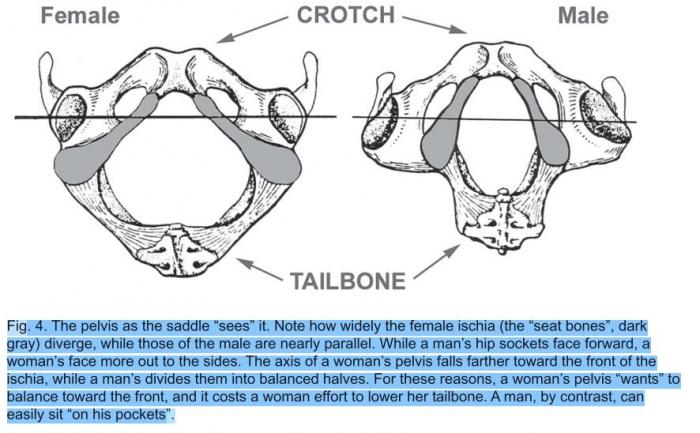
Anatomical differences between males and females and riding
Historically, riding was a male dominated sport, with few females who traditionally rode in side saddle. In this era, both males and abundant females ride astride to the traditional manner of riding irrespective of their anatomical differences.
The pelvis is the building block of a stable seat and has many anatomical differences between sexes. Since the pelvis of the female is wider, the seat bones are also more angled. This means the main point of contact with the saddle tends to be more to the front of the pelvis and leads to easily sitting before the midline. The comparison with men is seen in the picture below.
The lumbar spine is stacked on the sacrum, which in females needs to allow space for the birth canal. This different positioning also leads to the fact that females are more prone to (extreme) lumbar lordosis, a common fault in riding. Because of their sacral shape, men find it easier to sit on their tailbone and are less prone to lordosis.
In men, the hip sockets face more forward, making it easier to rest the inner surface of the thigh against the saddle, knees relaxed close to the saddle and toes pointing forward. Woman's hip anatomy means that the muscles in the front of the thigh and the iliofemoral ligament may need to be stretched to achieve the same effect. This highlights some anatomical differences and their effect on horse riding.
> Bennet. Equus magazine. 1989(140). All rights reserved to D. Bennet. Click here for the full-text article


